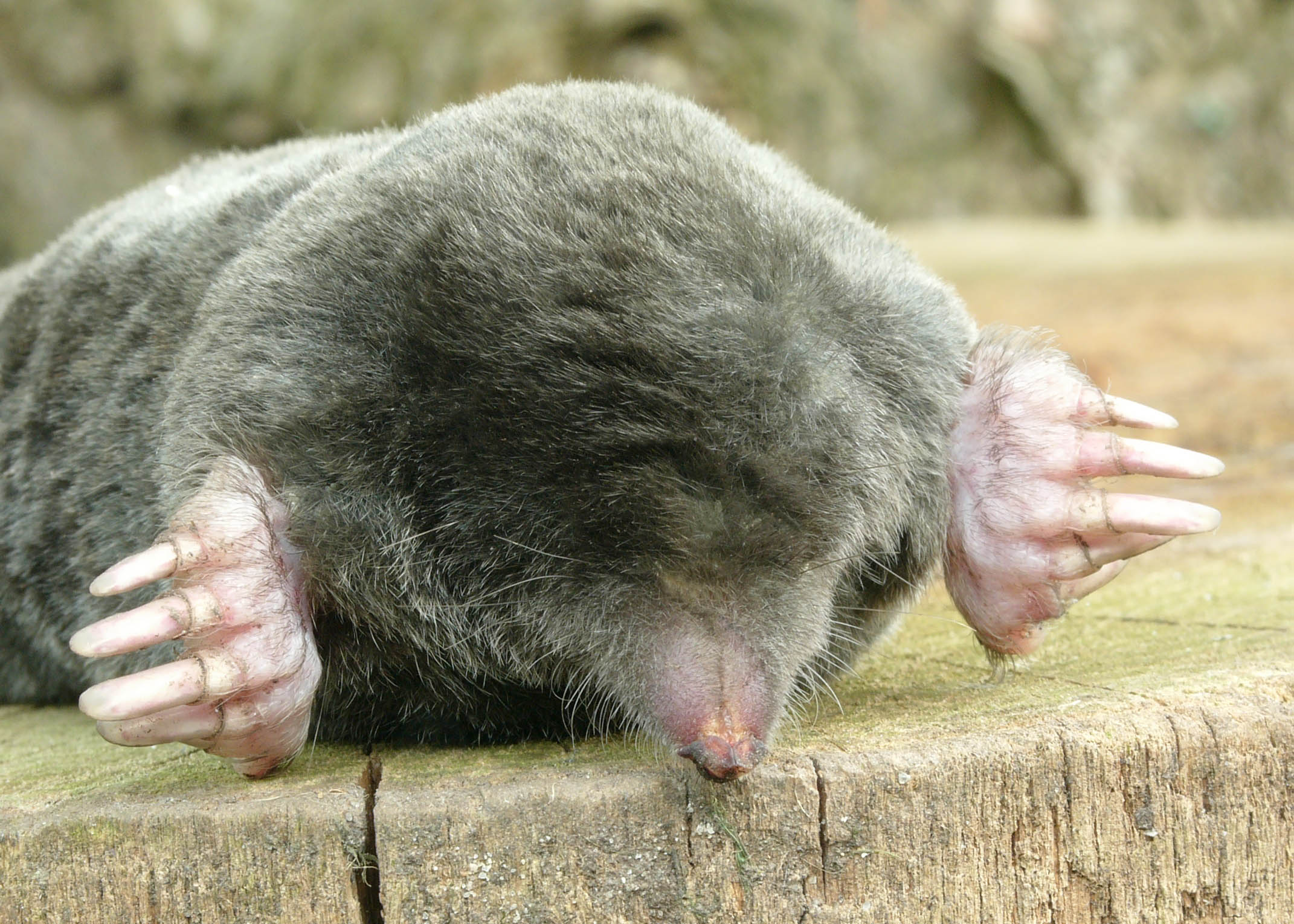
European mole, or Common mole, or Northern mole(Talpa europaea)
Phylum —chordata
Class — mammalia
Order — eulipotyphla
Family —talpidae
Genus— talpa
Appearance
The European mole has a cylindrical body and is 11 to 16 cm (4.3 to 6.3 in) long, weighing 70 to 130 g (2.5 to 4.6 oz). Females are typically smaller than males. The eyes are small and hidden behind fur, while the ears are just small ridges in the skin. The fur is usually dark grey, but the actual range of colors is larger, as due to the subterranean habits there is no disadvantage in having off-colored fur. European moles with white, light grey, tan, taupe, and black fur have all been reported.
Habitat
European moles are found from Britain and Spain eastwards through much of continental Europe to the rivers Ob and Irtysh in Russia. However, they don't occur in southern Europe.
Behavior
European moles live in an underground tunnel system, which they constantly extend. They spend most of their life underground in their burrows, and only sometimes come outside. These animals use their tunnels for food, collection and storage, and nesting. Interesting that females and males differently construct their burrows. Females tend to build an irregular network. Males build a long, straight tunnel with many branches. European moles are solitary creatures and very territorial. Both males and females mark their territory with the scent. European moles hunt their prey and stay active only at night. They use three methods of foraging. Individuals may dig in the soil, walk and search through the burrow system, or may hunt on the surface.
Diet
European moles are carnivores (insectivores, vermivores). They feed mainly on earthworms, but also on insects, centipedes and even mice and shrews.
Reproduction
European moles have a relatively short breeding season, that occurs in March and April, followed by a gestation period of four to five weeks. Most births occur at the end of April or at the beginning of May. The litter size ranges from two to seven pups. Young are born blind and hairless. Females nurse their offspring for four to five weeks and at the end of June, the young usually leave the tunnels. Both males and females become reproductively mature at 1 year of age.
The lifespan is from three to five years.
In captivity
In captivity, when animals do not need to look for food – the owner will feed it anyway, the animals move much less, while remaining the same good eaters. If you do not monitor their weight, the mole can die from obesity. The mole can be trained. For example, it can be trained to climb out of the ground to eat. You can either tap on the table or ring a bell. The main thing is that he knows that this sound means “food” for him.
 Russian
Russian
 English
English
























